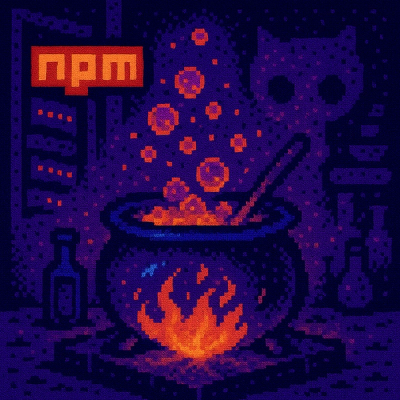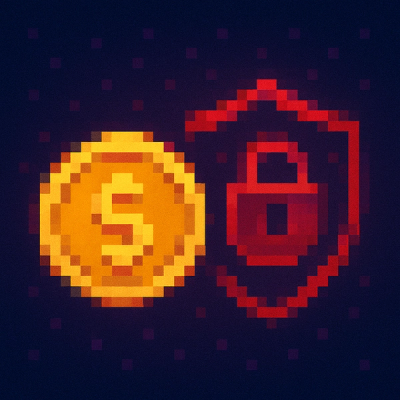
Security News
The Changelog Podcast: Practical Steps to Stay Safe on npm
Learn the essential steps every developer should take to stay secure on npm and reduce exposure to supply chain attacks.
@navpreetdevpuri/html-pdf
Advanced tools

Example Business Card
-> and its Source file
Have a look at the releases page: https://github.com/marcbachmann/node-html-pdf/releases
Install the html-pdf utility via npm:
$ npm install -g html-pdf
$ html-pdf test/businesscard.html businesscard.pdf
var fs = require('fs');
var pdf = require('html-pdf');
var html = fs.readFileSync('./test/businesscard.html', 'utf8');
var options = { format: 'Letter' };
pdf.create(html, options).toFile('./businesscard.pdf', function(err, res) {
if (err) return console.log(err);
console.log(res); // { filename: '/app/businesscard.pdf' }
});
var pdf = require('html-pdf');
pdf.create(html).toFile([filepath, ]function(err, res){
console.log(res.filename);
});
pdf.create(html).toStream(function(err, stream){
stream.pipe(fs.createWriteStream('./foo.pdf'));
});
pdf.create(html).toBuffer(function(err, buffer){
console.log('This is a buffer:', Buffer.isBuffer(buffer));
});
// for backwards compatibility
// alias to pdf.create(html[, options]).toBuffer(callback)
pdf.create(html [, options], function(err, buffer){});
html-pdf can read the header or footer either out of the footer and header config object or out of the html source. You can either set a default header & footer or overwrite that by appending a page number (1 based index) to the id="pageHeader" attribute of a html tag.
You can use any combination of those tags. The library tries to find any element, that contains the pageHeader or pageFooter id prefix.
<div id="pageHeader">Default header</div>
<div id="pageHeader-first">Header on first page</div>
<div id="pageHeader-2">Header on second page</div>
<div id="pageHeader-3">Header on third page</div>
<div id="pageHeader-last">Header on last page</div>
...
<div id="pageFooter">Default footer</div>
<div id="pageFooter-first">Footer on first page</div>
<div id="pageFooter-2">Footer on second page</div>
<div id="pageFooter-last">Footer on last page</div>
config = {
// Export options
"directory": "/tmp", // The directory the file gets written into if not using .toFile(filename, callback). default: '/tmp'
// Papersize Options: http://phantomjs.org/api/webpage/property/paper-size.html
"height": "10.5in", // allowed units: mm, cm, in, px
"width": "8in", // allowed units: mm, cm, in, px
- or -
"format": "Letter", // allowed units: A3, A4, A5, Legal, Letter, Tabloid
"orientation": "portrait", // portrait or landscape
// Page options
"border": "0", // default is 0, units: mm, cm, in, px
- or -
"border": {
"top": "2in", // default is 0, units: mm, cm, in, px
"right": "1in",
"bottom": "2in",
"left": "1.5in"
},
paginationOffset: 1, // Override the initial pagination number
"header": {
"height": "45mm",
"contents": '<div style="text-align: center;">Author: Marc Bachmann</div>'
},
"footer": {
"height": "28mm",
"contents": {
first: 'Cover page',
2: 'Second page', // Any page number is working. 1-based index
default: '<span style="color: #444;">{{page}}</span>/<span>{{pages}}</span>', // fallback value
last: 'Last Page'
}
},
// Rendering options
"base": "file:///home/www/your-asset-path/", // Base path that's used to load files (images, css, js) when they aren't referenced using a host
// Zooming option, can be used to scale images if `options.type` is not pdf
"zoomFactor": "1", // default is 1
// File options
"type": "pdf", // allowed file types: png, jpeg, pdf
"quality": "75", // only used for types png & jpeg
// Script options
"phantomPath": "./node_modules/phantomjs/bin/phantomjs", // PhantomJS binary which should get downloaded automatically
"phantomArgs": [], // array of strings used as phantomjs args e.g. ["--ignore-ssl-errors=yes"]
"localUrlAccess": false, // Prevent local file:// access by passing '--local-url-access=false' to phantomjs
// For security reasons you should keep the default value if you render arbritary html/js.
"script": '/url', // Absolute path to a custom phantomjs script, use the file in lib/scripts as example
"timeout": 30000, // Timeout that will cancel phantomjs, in milliseconds
// Time we should wait after window load
// accepted values are 'manual', some delay in milliseconds or undefined to wait for a render event
"renderDelay": 1000,
// HTTP Headers that are used for requests
"httpHeaders": {
// e.g.
"Authorization": "Bearer ACEFAD8C-4B4D-4042-AB30-6C735F5BAC8B"
},
// To run Node application as Windows service
"childProcessOptions": {
"detached": true
}
// HTTP Cookies that are used for requests
"httpCookies": [
// e.g.
{
"name": "Valid-Cookie-Name", // required
"value": "Valid-Cookie-Value", // required
"domain": "localhost",
"path": "/foo", // required
"httponly": true,
"secure": false,
"expires": (new Date()).getTime() + (1000 * 60 * 60) // e.g. expires in 1 hour
}
]
}
The full options object gets converted to JSON and will get passed to the phantomjs script as third argument.
There are more options concerning the paperSize, header & footer options inside the phantomjs script.
FAQs
Did you know?

Socket for GitHub automatically highlights issues in each pull request and monitors the health of all your open source dependencies. Discover the contents of your packages and block harmful activity before you install or update your dependencies.

Security News
Learn the essential steps every developer should take to stay secure on npm and reduce exposure to supply chain attacks.

Security News
Experts push back on new claims about AI-driven ransomware, warning that hype and sponsored research are distorting how the threat is understood.

Security News
Ruby's creator Matz assumes control of RubyGems and Bundler repositories while former maintainers agree to step back and transfer all rights to end the dispute.